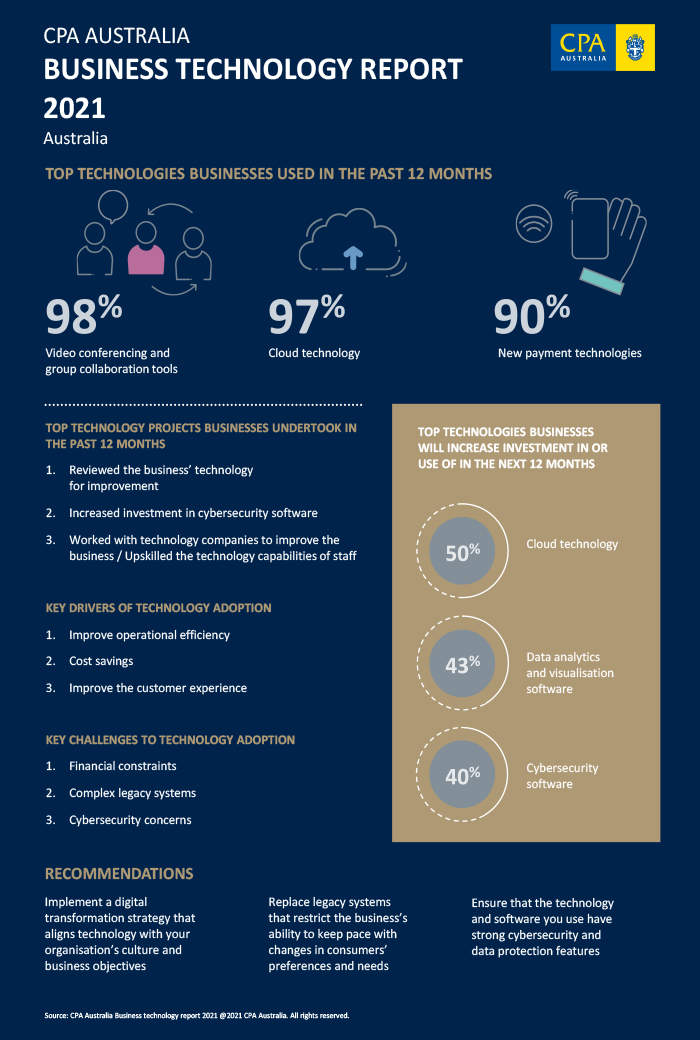Focus on better use of technology a proven winner for businesses of all sizes - CPA research
TECHNOLOGY use is a major determinant of business success and is set to become more influential, according to an in-depth global survey by one of the world’s largest professional accounting bodies, CPA Australia.
“High growth businesses spend more time and resources on technology,” CPA Australia senior manager for business policy Gavan Ord said.
"Their choice of technology puts them even further ahead of their competitors. Our survey results suggest other businesses may improve their growth prospects by investing in the technologies used by high growth businesses.”
CPA Australia surveyed 725 professionals in different industries in Australia, Mainland China, Hong Kong, Macau, Malaysia and Singapore. Respondents were asked about their businesses’ past and expected technology use and past and expected financial performance.
“COVID-19 accelerated technology adoption by businesses, but not all businesses were equally placed when the pandemic hit," Mr Ord said.
“High growth businesses had already embraced technology enthusiastically. This helped them manage the disruption caused by COVID-19.” 
High-growth businesses lead through tech
In 2020, high growth businesses were significantly more likely to develop a long-term technology strategy, work with technology companies and increase their recruitment of technology staff than businesses whose growth was stagnant or shranK, the research showed.
“High growth businesses have been focusing on technologies that deliver greater value to customers, such as data analytics and visualisation software, business intelligence software and artificial intelligence,” Mr Ord said.
Differences in future technology plans also set higher and lower growth businesses apart.
High growth businesses are much more likely to expect to increase their use of or investment in data analytics and visualisation software, business intelligence software, customer relationship management software and artificial intelligence than their lower growing counterparts.
The top technologies Australian businesses are most likely to increase investment in over the next 12 months are cloud technology and data analytics along with visualisation software. High growth businesses in Australia are also planning to invest in business intelligence software, CPA research revealed.
Key drivers and main challenges identified
The key drivers of technology adoption by Australian businesses are improving operational efficiency and the customer experience, while the main challenges are financial constraints and complex legacy systems.
“If you want to do well in business, look at what others are doing well," Mr Ord said. "The clear lesson from our survey is that technology adoption, and making the right choices, leads to better business performance.”
Over the next 12 months, large businesses -- taken as more than 1000 employees -- are planning to use or invest in data analytics and visualisation software, cloud technology, robotic process automation and artificial intelligence. 
Small businesses -- less than 50 employees -- are more likely to focus on cloud technology, video conferencing and group collaboration tools, and data analytics and visualisation software.
“When it comes to technology adoption, it’s not a level playing field, and many small businesses struggle," Mr Ord said. "We support government programs to build small businesses’ digital capability. It’s a great way for governments to future proof the economy.”
CPA Australia’s Business Technology Report 2021.
ends

 How to resolve AdBlock issue?
How to resolve AdBlock issue? 



